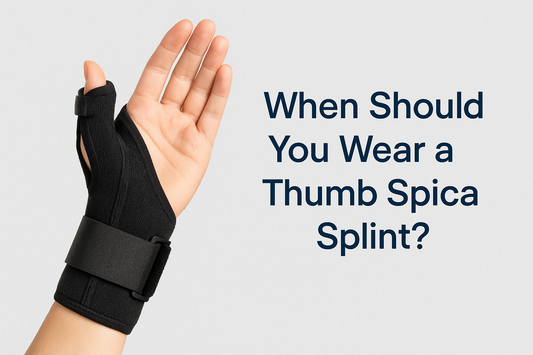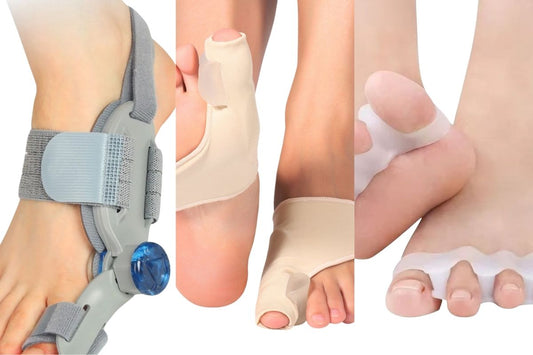A dull ache or sharp discomfort in your inner elbow might seem small at first—but if you rely on your arms for work, fitness, or everyday tasks, it can become a real disruption. Inner elbow pain is more common than people think, and it can stem from a number of different causes. Whether you're a weightlifter, an office worker, or someone who’s recently taken up pickleball, it pays to understand what’s behind that persistent elbow soreness.
In this article, we’ll break down common causes of pain on the inner side of your elbow, what symptoms to watch for, and how tools like a tennis elbow brace can actually help with more than just tennis-related injuries.
What Is Inner Elbow Pain?
Pain on the inside of the elbow (the side closest to your body when your arms are at rest) is often referred to as medial elbow pain. It’s commonly associated with a condition called medial epicondylitis, also known as golfer’s elbow—but the discomfort can also come from nerve compression, tendon strain, or repetitive stress.
Key Symptoms:
- Tenderness near the bony bump on the inner elbow
- Pain when gripping, lifting, or rotating the wrist
- Numbness or tingling down the forearm (suggestive of ulnar nerve involvement)
- Stiffness or weakness in the arm

Common Causes of Inside Elbow Pain
-
Golfer’s Elbow (Medial Epicondylitis)
Despite the name, this can happen even if you’ve never picked up a golf club. It’s caused by repetitive wrist and finger movements—often in activities like weightlifting, rock climbing, typing, or even cooking. -
Ulnar Nerve Entrapment (Cubital Tunnel Syndrome)
The ulnar nerve passes through a narrow space near your elbow. When it’s compressed, you might feel numbness or tingling in the ring and pinky fingers, along with elbow discomfort. -
Tendon Strain from Overuse
Manual labor, poor form during workouts, or repetitive hand motions (e.g., with tools or instruments) can cause small tears in the tendon, leading to inflammation and pain. -
Arthritis or Joint Inflammation
Though less common, elbow pain can also result from underlying joint inflammation—particularly in older adults or those with autoimmune conditions.
How an Elbow Brace Can Help

Wearing an elbow brace—especially one designed for repetitive strain injuries like tennis elbow—can significantly reduce discomfort, improve function, and support healing. Even if your pain stems from the inside of the elbow (medial epicondylitis, or golfer’s elbow), many of these supports are still highly effective when applied correctly.
Types of Elbow Braces and Their Roles
-
Elbow Sleeves (Compression Sleeves)
These are soft, stretchy supports that apply uniform compression around the entire joint.- Best for: General elbow pain, swelling, mild inflammation, or fatigue after repetitive tasks.
- Benefits: Promotes circulation, reduces swelling, and provides gentle support during activity.
-
Standard Elbow Braces
These are adjustable braces with straps, sometimes with added padding or gel inserts.- Best for: Targeted tendon support in conditions like golfer’s elbow or tennis elbow.
- Benefits: Allows you to apply pressure precisely where it’s needed, which helps offload stressed tendons.
-
Tennis Elbow Braces (Counterforce Braces)
These braces have a strap that wraps around the forearm just below the elbow joint.- Best for: Lateral or medial epicondylitis (tennis or golfer’s elbow), especially during activity.
- Benefits: Absorbs force before it reaches the tendon, reducing microtrauma and pain during movement.
-
Hinged Elbow Braces
Rigid braces used to restrict motion after surgery or major injury.- Best for: Post-surgical recovery or severe joint instability.
- Note: Not commonly used for mild or moderate overuse injuries.
When choosing a brace, the goal is to match the type of support to your activity level and pain severity. For inside elbow pain from lifting or gripping, a well-placed tennis elbow strap (worn on the medial side) or a light compression sleeve is often enough.
When to Use a Brace
- Your pain is related to repetitive motion (typing, lifting, racquet sports).
- Symptoms worsen during activity but improve with rest.
- You need support while continuing daily tasks or light work.
Wearing a brace during periods of aggravation can help reduce the load on injured tendons, prevent re-injury, and promote healing without complete rest. Braces are especially helpful if you're in a profession that involves gripping, carrying, or fine hand movements.
When to See a Doctor
- The pain is sharp, constant, or progressively worsening.
- You feel numbness, tingling, or weakness in your hand or fingers.
- Your elbow is visibly swollen, bruised, or warm to the touch.
- Pain persists beyond 2–3 weeks even with rest and support.
Persistent inner elbow pain may indicate nerve involvement (like ulnar nerve entrapment), or a tear that requires more than just a brace.
Final Thoughts
Inner elbow pain doesn’t always mean time off—it just means it’s time to listen to your body. Simple tools like an elbow brace, targeted stretches, and posture adjustments can make a big difference. And if you’re dealing with persistent discomfort, don’t wait too long to explore professional help.




